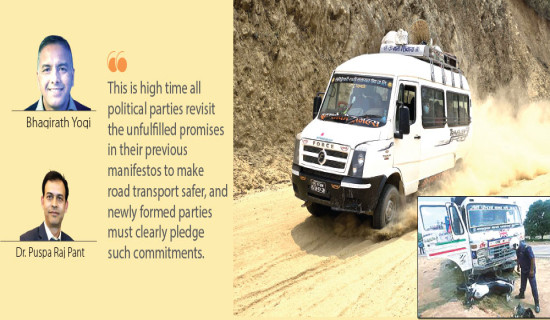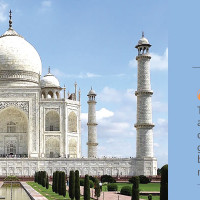- Friday, 12 December 2025
Threat Of Excessive Glacial Melt Looms
The Himalayas are a boon for the communities living around them as they are an abundant supply of water for drinking, agriculture, hydropower, water-intensive industries and other purposes. However, the accelerating glacial melt has posed an existential threat in recent times. The Himalayan glaciers are melting alarmingly owing to climate change, threatening ecosystems, the availability of water resources and the livelihoods of the communities living in and around the Himalayan region.
Initially, the glacial melt provides abundant water but in the long run, the amount of water diminishes. The glacial melt gives rise to several dire consequences such as glacial lake outburst floods (GLOFs) and imperils water for drinking, agriculture, industry and power generation. The rapid glacial melt and expansion of glacial lakes lead to GLOFs and devastating floods, playing havoc with life and property.
Mountain ecosystems
The glacial melt and climate change disturb mountain ecosystems and biodiversity, affecting millions of people whose livelihoods depend on the mountains as well as the tourism, especially trekking, business. The glacial melt and climate change affect the trails and landscapes that are the underpinnings for fostering trekking. The hazards associated with the glacial melt, such as glacial retreat, thinning and loss, have been witnessed since the 1970s. These hazards have increased the risks of GLOFs, avalanches and rockslides.
Reports have it that glacial lakes in Nepal expanded by 25 per cent during the period of 30 years from 1987 to 2017, averaging 0.83 per cent per year. During the period, the Koshi basin recorded the highest expansion, followed by the Gandaki and Karnali basins. The Centre for Integrated Mountain Development (ICIMOD) has published a report on the Hindu Kush-Himalayan (HKH) glacial melt. The HKH region includes Nepal together with Afghanistan, Bangladesh, Bhutan, China, India, Myanmar and Pakistan. The HKH region is the source of water for ten of Asia’s largest rivers, providing freshwater for 240 million people. As per the report, the glaciers in the HKH region shrank by a whopping 65 per cent during the 2010-2019 period vis-à-vis the 2000-2009 period.
The HKH region is warming at a higher rate than the global average, which is a matter of concern. As a result, precipitation is increasing and the glacial melt is unexpectedly going up. This has resulted in disruptions in the water supply, threatening GLOFs, flash floods, sea level rise and the livelihoods of the people. Further, the exposure of mountains has also resulted, giving rise to natural calamities such as rockslides, landslides and avalanches. The HKH region is an important source of water for millions of people. The glacial melt and the loss of snow are threatening the communities and disrupting ecosystems by posing challenges to the access to water.
There is a close connection between the glacial melt and global warming. Global warming foments the glacial melt during the hot season. Glaciers depend on temperature and the amount of snowfall. As temperatures increase, glaciers melt and get reduced in size. It is reported that the size of glaciers has decreased by 15 per cent over the last 50 years. As temperatures are increasing and efforts to keep them within the bounds of 1.5 degrees Celsius vis-à-vis the pre-industrial baseline have not materialised, 30 to 35 per cent of the ice volume of the glaciers may be lost by 2100, which will give rise to further water scarcity and affect the lives of the communities in the form of damage to property and infrastructure and natural calamities such as landslides, floods and avalanches.
The Himalayan region of Nepal is prone to ice loss owing to topography and high elevation. To curb the pace of the glacial melt, it is necessary to curb global carbon emissions. For this, reducing or eliminating the use of fossil fuels may be one of the viable options. In recent times, Nepal has emphasised the use of electric vehicles. And the number of such eco-friendly vehicles is also gradually increasing. Likewise, the use of electric appliances such as induction stoves also contributes to reducing the use of fossil fuels. Reducing tax on electric vehicles could boost their use further. But the government is averse to such concessions.
The Himalayan glacial melt is not only a local concern; it is a global concern. Nepal alone cannot face the challenges. International cooperation is urgently needed to tackle the challenges before it is too late. International partnerships for sustainable development, livelihood opportunities for the affected communities, technology transfer and capacity building are crucial to coping with the challenges. Further, international collaboration in developing early warning systems, data sharing or exchange, disaster risk reduction, water management and sustainable agricultural practices is equally essential. Policymakers and leaders also need to take the initiative in reducing the impacts of climate change on mountainous regions.
Dire consequences
It would be relevant to note that United Nations Secretary-General Antonio Gutteres visited Nepal in 2023. While in Nepal, he highlighted the enormous impacts of climate change on the people of Nepal and lamented that the people were suffering from the dire consequences for no fault of their. He remarked that the glacial melt taking place in Nepal was causing loss to the country and beyond. The UN Chief accentuated the need for curbing climate change. “It’s time to halt the madness of climate change,” he said.
After all, glaciers are a spectacular boon of nature. They are not only a means of livelihood for the people but also a destination for tourists. The HKH communities are suffering from the hazards posed by the glacial melt, although they have contributed negligibly to global warming caused by greenhouse gas emissions. This is a natural injustice for them. So, concrete measures need to be taken without delay to curb the glacial melt.
(Maharjan has been regularly writing on contemporary issues for this daily since 2000.)
















